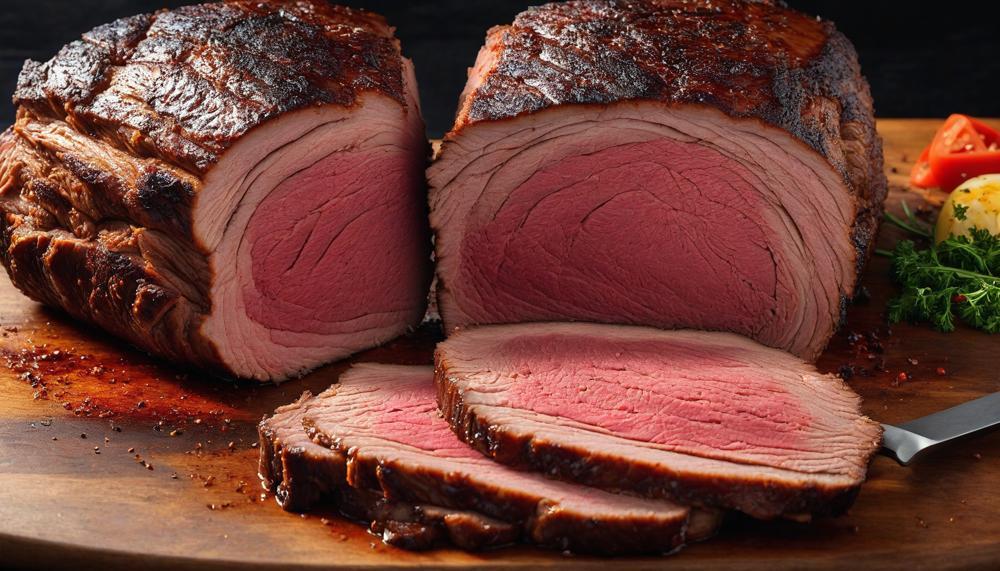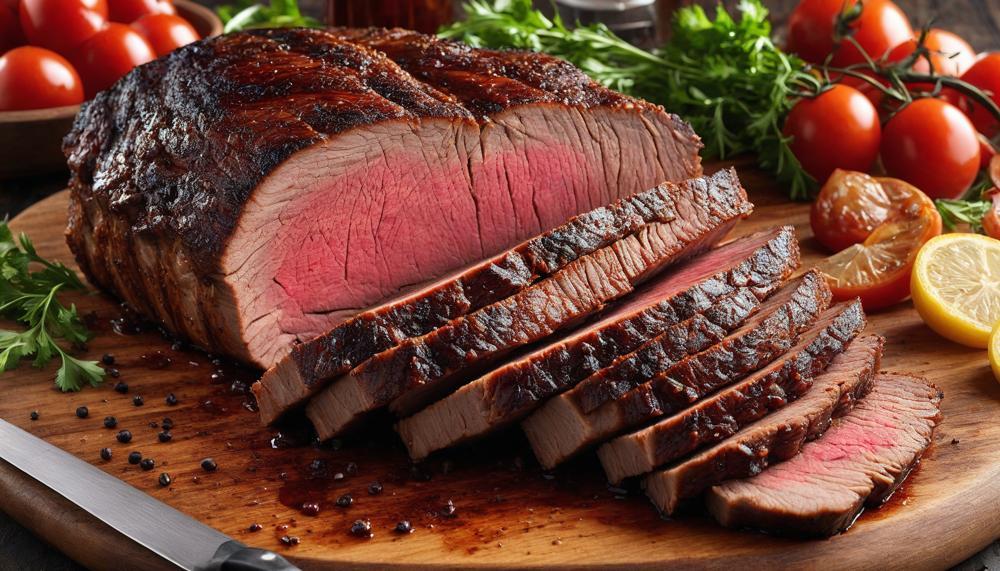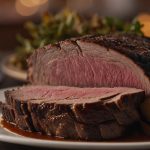Resting a brisket after cooking is a critical step in ensuring juicy, flavorful slices. However, like most things in barbecue, timing is everything. While a brief rest allows juices to redistribute, enhancing tenderness, an extended rest can lead to unintended consequences.
Imagine your perfectly smoked brisket—crispy bark, tender meat—now left too long on the counter. As it cools, the texture changes, potentially drying out what was once succulent. The key lies in finding the sweet spot between resting for tenderness and avoiding over-resting that compromises texture and taste.
Key Takeaways:
- Resting Time Matters: Aim for 1 to 4 hours, depending on the brisket’s size.
- Method Matters: Use foil or a faux Cambro to control moisture and temperature.
- Avoid Over-Resting: More than 4 hours risks cooling the brisket and affecting its texture.
Mastering the art of brisket includes mastering the art of rest. Let’s delve deeper into how to achieve that perfect balance.
Contents
Can Brisket Rest Too Long?
| Can Brisket Rest Too Long? | Yes, brisket can indeed rest for too long. | |
| Explanation | While resting brisket after cooking is essential for optimal tenderness and flavor development, exceeding the recommended resting period can lead to undesirable outcomes. Here’s why: | |
| Optimal Resting Periods by Size | It’s recommended to rest brisket for 1 to 4 hours depending on its size. Smaller briskets should rest for around 30 minutes to 1 hour, whereas larger cuts can rest up to 4 hours. | |
| Risks of Over-Resting | If brisket rests beyond 4 hours, even in a controlled environment like a faux Cambro or low oven, it can cool down significantly. This cooling affects texture negatively, potentially making the meat tougher and less enjoyable. | |
| Managing Resting Techniques | Choosing whether to rest brisket uncovered for a crunchy bark or covered to retain moisture is crucial. However, prolonged resting, especially covered, can increase the risk of overcooking. | |
| Holding Brisket Post-Rest | If necessary, brisket can be held in a low oven (150-160°F) for up to 8 hours. Beyond this time, there’s a higher risk of overcooking, resulting in dry meat. | |
The Importance of Resting
| Benefits of Allowing Brisket to Rest | Impact on Overall Quality of Meat | Insights |
| Juice Redistribution: Resting allows juices to redistribute within the brisket, enhancing moisture and flavour. | Resting preserves moisture, resulting in juicier meat when sliced. | Serious Eats |
| Texture Improvement: Collagen firms up during resting, improving tenderness and reducing chewiness. | Proper rest ensures the brisket is tender and less chewy, especially crucial for the leaner flat end. | Amazing Ribs |
| Moisture Retention: Less moisture loss during slicing preserves the meat’s natural juices. | Significant reduction in moisture loss ensures a more succulent eating experience. | BBQ Brethren Forum |
| Flavor Enhancement: Resting allows flavours to settle and develop, enhancing overall taste. | Improved flavour profile due to the settling of juices and enhanced tenderness. | Smoking Meat Forums |
| Heat and Steam Management: Cooling before slicing prevents steam loss, maintaining moisture. | Retention of steam ensures the brisket remains moist and tender. | Virtual Weber Bullet |
Resting a brisket is not just about patience; it’s about ensuring a culinary masterpiece on your plate. By allowing the brisket to rest after cooking, you’re not just preserving moisture but also enhancing its tenderness and flavour.
This critical step redistributes juices, firms up collagen for a better texture, and prevents significant moisture loss when you finally slice into it. For the best results, aim to let your brisket rest for at least one hour before serving.
So, How Long Should Brisket Rest?
Brisket should rest for at least 30 minutes to 1 hour after cooking. This resting period is essential as it allows the juices within the meat to redistribute evenly, ensuring a tender and moist final product. Additionally, resting allows the collagen in the brisket to firm up slightly, enhancing its overall texture and making it easier to slice neatly without losing its juices.
During the resting process, it’s crucial to wrap the brisket in either foil or butcher paper. This wrapping method helps retain heat and moisture while also allowing excess steam to escape gradually. For those aiming to keep their brisket warm for an extended period, consider wrapping the wrapped brisket in a towel and placing it inside a dry insulated cooler. This method can maintain the brisket’s temperature for several hours without compromising its quality.
By following these steps, you’ll ensure that your brisket reaches its full potential in terms of flavour, tenderness, and overall enjoyment when served.
Should You Cover The Brisket As It Rests?
| Should You Cover The Brisket As It Rests? | ||
| The short answer is no, you should not cover the brisket as it rests. | ||
| Resting the brisket uncovered helps maintain its crunchy bark and prevents it from steaming and becoming soggy. This is crucial for preserving the texture and flavour you’ve worked hard to achieve during the cooking process. | ||
| Key Points | Details | Insight |
| Preservation of Bark | Leaving the brisket uncovered preserves the exterior bark, which is prized for its texture and flavour. | Preserving the bark ensures a satisfying crunch with each bite. |
| Cooling Effect | Uncovered resting allows the brisket to cool faster, making it easier to slice and serve promptly. | Faster cooling helps maintain optimal texture throughout the meat. |
| Moisture Control | Covering can trap moisture, potentially softening the bark and altering the texture of the brisket. | Uncovered resting prevents the brisket from becoming soggy. |
| For the best results, place the rested brisket on a clean cutting board and tent it loosely with foil if you need to hold it for an extended period before serving. This allows it to stay warm without compromising the texture of the bark. | ||
Resting your brisket uncovered after cooking is essential to maintaining its texture and flavour integrity. This method allows the brisket to cool naturally while preserving the crispy bark on the outside.
Is There Such Thing As Resting a Brisket for Too Long?
| Is There Such Thing As Resting a Brisket for Too Long? | Answer | Explanation |
| Yes, there is indeed a limit to how long you should rest a brisket. | Resting a brisket for too long can affect its texture negatively. | When brisket rests for an extended period, it begins to cool down, which can lead to a loss of optimal serving temperature and texture. The meat may become cooler than desired, altering its mouthfeel and making it less enjoyable when served. |
Resting a brisket is crucial to allow its juices to redistribute, ensuring a moist and flavourful result.
How To Rest Brisket In Foil
To properly rest a brisket in foil, follow these steps to ensure it retains moisture and tenderness:
Remove from Heat
Take the brisket off the heat source once it’s cooked to your desired doneness.
Wrap in Foil
Wrap the brisket tightly in aluminium foil to lock in juices and maintain warmth.
Initial Resting
Place the foil-wrapped brisket on a platter or cutting board. Let it rest undisturbed for at least one hour. This allows the juices to redistribute evenly throughout the meat.
Consider Using a Faux Cambro

For longer resting times, consider using a faux Cambro method to keep the brisket warm for up to four hours:
| Step | Description | Details |
| Prepare the Cooler | Fill a cooler with hot water and let it sit for 30 minutes to warm up. | This helps maintain the brisket’s temperature. |
| Wrap and Place | Once wrapped in foil, place the brisket in an aluminum pan. | Aluminium pans are effective for holding heat. |
| Maintain Warmth | Empty the cooler of water and place the wrapped brisket inside. | This keeps the brisket warm without overcooking. |
Proper Resting Duration
Aim to rest the brisket for 1 to 2 hours. This duration allows the collagen to firm up, ensuring a tender bite.
Avoid Over-Resting
Resting for too long can cool the brisket, affecting its texture. Use a faux Cambro or a low oven (around 150-160°F) for extended holding periods, but monitor closely to prevent overcooking.
The Faux Cambro Technique
The Faux Cambro Technique helps keep brisket warm while resting by providing a stable and insulated environment that prevents rapid heat loss. Here’s how it works:
- Insulated Environment: The cooler used in the Faux Cambro Technique acts as a highly insulated container. This insulation reduces heat transfer, keeping the brisket’s internal temperature steady for an extended period.
- Maintains Temperature: After cooking, brisket continues to cook internally and needs time to redistribute juices. Placing it in the faux Cambro allows the residual heat to evenly distribute throughout the meat without losing moisture.
- Prevents Overcooking: By maintaining a consistent temperature, the faux Cambro prevents the brisket from cooking further while resting. This ensures the meat remains tender and juicy without becoming dry.
- Longer Resting Periods: Unlike traditional resting methods that may only keep the meat warm for a short time, the faux Cambro can maintain optimal serving temperature for several hours. This flexibility allows you to time your meal perfectly without worrying about the brisket cooling down.
In essence, the Faux Cambro Technique is a practical solution for home chefs and grill enthusiasts alike, ensuring that your perfectly cooked brisket stays just as delicious when it’s time to serve.
Can You Rest Brisket In The Oven?
Yes, you can rest brisket in the oven. After cooking, preheat your oven to its lowest temperature setting, typically around 60-70°F (15-21°C). Once heated, turn off the oven. Next, tightly wrap your cooked brisket in aluminum foil to retain moisture. Place the wrapped brisket on a baking sheet or in an oven-safe dish. Finally, place it in the preheated oven to rest. This method keeps the brisket warm without continuing to cook it, allowing the juices to redistribute throughout the meat for enhanced flavour and tenderness when served.
This technique mimics the Faux Cambro method, maintaining an insulated environment that preserves the brisket’s optimal temperature for extended periods. It’s a reliable way to ensure your brisket stays moist and delicious until you’re ready to enjoy it.
Conclusion
Resting a brisket is a crucial step in achieving a tender and flavorful outcome, but can you let it rest for too long? Absolutely. While a brief rest of 1 to 4 hours allows the juices to redistribute and the meat to firm up, exceeding this timeframe can lead to unintended consequences. If a brisket rests for more than 4 hours, even in a controlled environment like a faux Cambro or low oven, it risks cooling down significantly. This cooling alters the texture, potentially making the meat tougher and less enjoyable.
To maintain optimal texture and taste, it’s essential to find the right balance in resting time based on the brisket’s size. Smaller cuts may only need 30 minutes to 1 hour, while larger ones can benefit from up to 4 hours of rest. Additionally, how you manage the brisket during its rest—whether wrapped in foil or butcher paper—can impact moisture retention and the integrity of its outer bark.
In conclusion, while resting a brisket is pivotal for enhancing its tenderness and flavor, it’s crucial to adhere to recommended timeframes.






